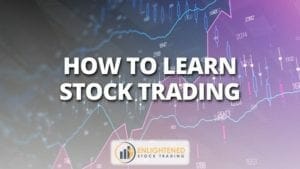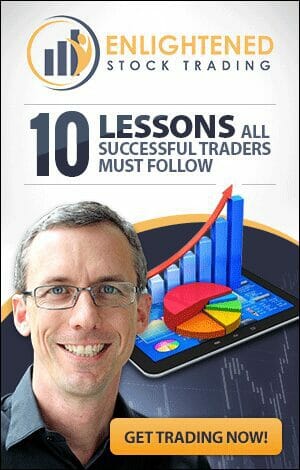What is possible and realistic depends very much on YOU – your skills as a trader, how good the trading system is and how much risk you can comfortably take on.
When I first started, my objective was to ensure that I didn’t lose all my money! Now my objective is significantly more optimistic than that. It is hard to say what is reasonable for your purposes, but hoping to earn 50% per year consistently is probably unrealistic for a beginner (and most professionals in fact), and hoping to earn 5% per year consistently is not worth bothering with because you can get better risk adjusted returns elsewhere.
If you spend any time at all surfing the web looking at the sorts of returns people are claiming, you will notice that (particularly leveraged Forex and Options trading) will claim to be earning 5% to 10% a month…But you really have to wonder what level of risk they are taking on and what will happen to their account when a bad trade comes along.

It is not always true that you need to take on higher risk to get higher rewards. For example you may design a better trading system than you had previously and get better returns for less risk. However, I believe two general principles apply:
- There is always risk – but it may not always be obvious or visible (if you don’t believe me just Google Long Term Capital Management)
- Higher returns generally mean higher levels of risk (remember to refer to principle 1 here – that higher level of risk may not be visible)
So rather than starting with the return side of the equation, I suggest you think very carefully about your objectives for risk and capital preservation first. If you start with risk and then determine how much return you can get for your acceptable level of risk you are less likely to get yourself into trouble. But if you start with returns, you are likely to get seduced by the dark side (yes that is an intentional Star Wars reference) and end up taking on more risk than you really should.
Define your risk tolerance FIRST…
If you do not want to risk losing more than 5% of your account then this will tell you that you need to be very conservative and your returns will also be conservative. If you are comfortable risking a 50% loss of your trading capital then you could aim for much higher returns.
Think about this at different levels:
- If you started trading with $10,000, how much of this would you be comfortable losing before you gave up on trading?
- If you had some success and you built your account up to $50,000, how much of this would you be comfortable losing?
- If you had even more success and your account was up to $100,000…
- …$250,000…
- …$1,000,000…
The risk side of your objectives is much more informative than the return side generally. Other risk type questions to ask might include:
- How much am I comfortable losing if the market crashes by 25% tomorrow?
- What is the most money I can lose without it emotionally compromising my trading?
- How much money am I willing to put into a single stock given the risk of a stock specific event causing a big drop in the stock price or company insolvency?
- What probability of a certain percentage loss are you willing to accept?
The great thing about modern trading software is that you can back test your trading system and ensure that your system’s performance historically remained within your risk management objectives.
Now you are ready to target your returns…
Now that you have thought about your risk objectives you can start to determine what makes sense for your return target. As a starting point I would say that your return target should be at least the same size as your maximum drawdown tolerance. For example, if your maximum acceptable historical drawdown is 15%, then you should be aiming for at least 15% per annum compounded return.
So start by setting a target for annual returns of 1 – 1.5 times your maximum drawdown tolerance that you identified above. This tells you what to shoot for in terms of returns and ensues that you will also remain within your risk management objectives. The great thing about that is your stress levels will be low because you are comfortable with the fluctuations in your account.

Your trading profit goals are dependent on your drawdown tolerance
This approach will stop you from getting carried away with promises of doubling your money every year if the expected drawdown from this is 85%…especially if you already decided that you are only comfortable with a 10% drawdown.
The better you get at designing stock trading systems and the more diversified trading systems you have, the higher the returns you can make for a given risk tolerance.
If you are ready to manage your risk and improve your returns in the stock market by learning to trade systematically, then click the button below and enter your details to discover my 10 Commandments for Profitable Stock Trading.
Trade Profitably!
Adrian Reid
Founder – Enlightened Stock Trading









Share This
Share this post with your friends!